

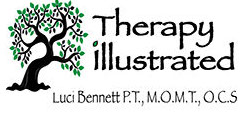
Rehabilitation
Rehab is the process of resolving inflammation and then applying the appropriate levels of stress, rest, and protection. Progression through the stages of healing leads to recovery of tissue function with resolution of pain.
Muscles, tendons, ligaments, connective tissue, bones, and discs require a combination of things in order to fully heal. These requirements change with each stage of healing. The art of rehabilitation is finding the right timing with the right treatment intervention.
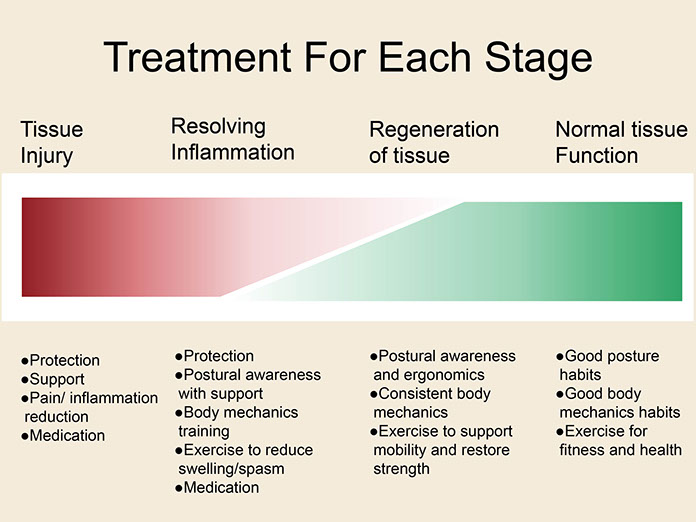
The initial stages of inflammation early in the process of healing can be difficult to move past. A self perpetuating cycle can set in that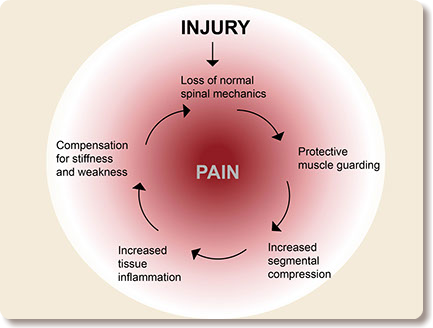 keeps some painful conditions "stuck." Once inflammation sets in and those spinal mechanics are lost, the muscles are triggered to protect. Protective muscle guarding is a bracing of the muscles that is intended to prevent any further threat to the nervous system. It persists long past the threat in many cases.
keeps some painful conditions "stuck." Once inflammation sets in and those spinal mechanics are lost, the muscles are triggered to protect. Protective muscle guarding is a bracing of the muscles that is intended to prevent any further threat to the nervous system. It persists long past the threat in many cases.
Treatment in these early phases is focused on reducing spasm and resolving inflammation. Once things have settled down, then the focus shifts to restoring normal motion, strength, and activity tolerance
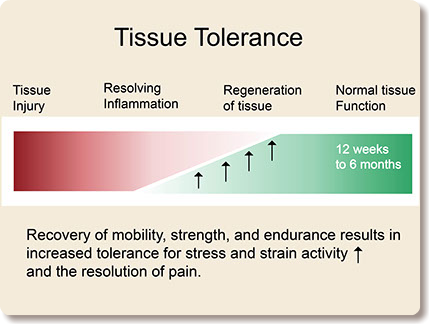
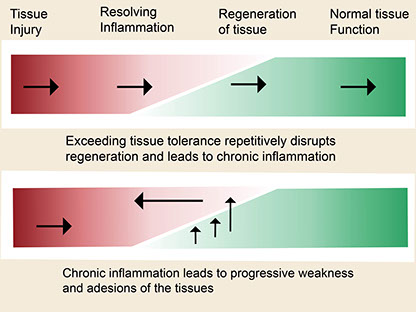
As the pain recedes, the tissue is very weak and stiff and has a limited tolerance for activity. The damaged area requires cellular stimulation in order to fully regenerate. In other words, the tissue won’t just heal on its own. A structured progression of exercise is needed to restore the tissue's strength, endurance, coordination, balance, and flexibility.
Chronic pain develops as a result of chronic inflammation. When the tissue isn’t fully restored then the tendency is to subject the area to too much stress and re-initiate an inflammatory response.
Another complicating factor is the body’s capacity for compensating for a weak or stiff area. Pain starts to develop in other parts as a result.
The middle stages that bridge Resolving Inflammation to Tissue Regeneration are the most difficult to navigate because it takes so long for the healing to occur and the pain to diminish. It is easier to be protective of a painful back when you have a constant painful reminder. Months of limiting enjoyable activities that might over stress the spine is frustrating.
Specific activities that remain painful may need a more precise rehabilitation. The more defined your understanding is of your pain pattern, the more direct your rehab can be.
Why won't my pain go away? I still hurt when I...
The contents of BackPainExplained web site including the text, graphics, images, and other material are for informational purposes only. The content of this web site is not intended to be a substitute for professional medical advice, diagnosis, or treatment. Always seek advice of your physician or other qualified health professional with questions you may have regarding a medical condition. Do not delay seeking medical advice or disregard professional treatment advice because of something that you have read on BackPainExplained.
Call your physician or 911 if you think that you have a medical emergency. Reliance on any information within BackPainExplained web site is solely at your own risk.